
Roots
Consider a strand, a single helix unfurling from its delicate follicle. For generations, for centuries, those of us with hair that coils, springs, and reaches skyward have known its profound language. We speak of its thirst, its vibrant resilience, and its innate desire for communion with the earth’s bounty. This deep wisdom, passed through touch and quiet knowing, predates modern science.
It lives within the collective memory of hands anointing curls with nature’s unguents. At the heart of this ancient understanding, a subtle, often overlooked botanical marvel exists ❉ mucilage. It is a secret whispered through time, a viscous gift from plants that offers a remarkable path to smoothing textured hair, not by force, but by gentle persuasion and nourishing care.
Mucilage, when reduced to its elemental form, presents as a thick, gelatinous substance. Plants create it, a protective shield or a storehouse of life. This complex carbohydrate, often composed of polysaccharides and glycoproteins, becomes profoundly slippery upon contact with water.
It is this unique quality that transforms it into a profound ally for hair. Think of the way certain seeds swell and become almost slick when steeped in water; that very slipperiness is the essence of mucilage at work.
The architecture of textured hair, with its characteristic coils and bends, possesses a beauty and a vulnerability all its own. Each curve along the hair shaft represents a potential point of friction, a place where the outer layer, the cuticle, might lift. When this happens, hair can appear less smooth and more prone to tangles. The very structure of Afro-textured hair, for instance, often presents a spiral or zigzag shape, creating natural points of fragility at each bend.
This intrinsic characteristic, though a source of visual wonder, also means that moisture can escape more readily and external stressors can cause more pronounced friction. The hair’s cuticle, like overlapping shingles on a roof, requires precise alignment to reflect light, to seal in moisture, and to permit easy movement. Mucilage steps into this delicate balance.
When applied to hair, mucilage forms a protective, flexible film. This botanical coating does not merely sit upon the surface; it interacts with the cuticle, helping to lay those shingle-like layers flat. This process of smoothing minimizes the friction between individual hair strands and helps to reduce the appearance of frizz. It creates a glide, a ‘slip’, that allows detangling tools or fingers to move with far less resistance, reducing breakage.
The scientific understanding of mucilage reveals its capacity to bind moisture to the hair, acting as an emollient that deeply conditions. This moisture-binding characteristic is particularly significant for hair types that struggle to absorb and retain water. Marshmallow root, for instance, is highly praised for its mucilage content, which provides extraordinary slip for detangling and also acts as a natural conditioner, coating strands to appear smoother and shinier.
Ancestral practices across diverse communities intuitively understood the value of this plant-derived slipperiness. For generations, indigenous peoples and those in the African diaspora turned to the land for remedies that brought ease and well-being to their hair. These were not just practical applications; they were expressions of deep connection to nature and a profound respect for the body. The wisdom of these forebears often spoke of ingredients that gave hair a certain ‘feel’—a silkiness, a yielding quality that modern science now attributes to mucilage.
Mucilage from botanicals provides a natural, conditioning slip that aligns the hair’s cuticle, reducing friction and enhancing smoothness for textured strands, echoing ancestral wisdom of plant-based care.
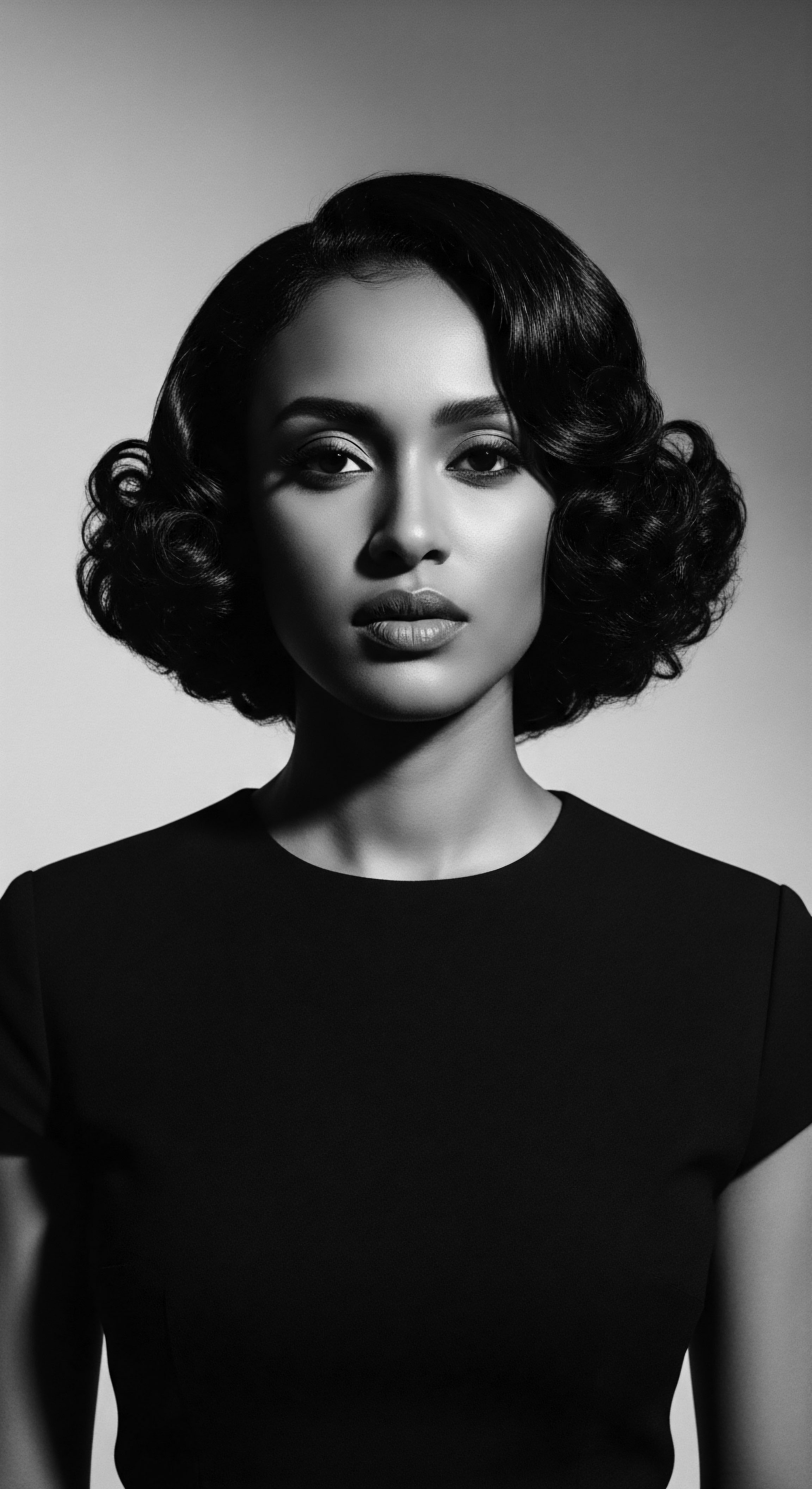
The Ancestral Embrace of Slip
The practice of using mucilaginous plants for hair care reaches back through time, long before the advent of industrial beauty products. In various indigenous traditions, knowledge of local flora and its properties was woven into daily life and sacred ritual. The Native American use of Slippery Elm Bark (Ulmus rubra) stands as a powerful example of this inherited wisdom. For centuries, the inner bark of the slippery elm tree, native to eastern North America, has been recognized for its demulcent and emollient properties.
When mixed with water, its powdered form transforms into a very slippery gel, rich in mucilage. This gel was historically employed not just for medicinal purposes, but significantly, for the care of hair. It was used to make hair more manageable, facilitating detangling for hair types prone to knots and snarls.
This traditional application of slippery elm highlights a core aspect of ancestral hair care ❉ the pursuit of gentle methods that respected the hair’s natural state. The ‘slip’ provided by the mucilage allowed for detangling with minimal pulling and breakage, a fundamental concern for those with delicate, coiled hair. This stands in contrast to the often harsh, damaging approaches that later arose from Eurocentric beauty standards.
The reverence for hair as a marker of identity and status was prevalent in many African cultures, where hair was often intricately braided, woven, or picked in patterns reflecting mathematical precision and spiritual significance. The tools and techniques were chosen with care, prioritizing health and integrity.

Unraveling the Strand’s Secrets
To truly appreciate how mucilage works, we might consider the hair strand itself. Each strand, though seemingly simple, is a marvel of biological engineering. The outer layer, the cuticle, comprises overlapping scales. In straight hair, these scales lie flat and smooth.
In textured hair, with its inherent curves and twists, these scales can lift more easily, leading to a rougher surface and increased susceptibility to tangling and breakage. The very helical structure of curls can also hinder the even distribution of the scalp’s natural oils, contributing to dryness.
Mucilage, with its unique chemistry, offers a bridge between these structural realities and the desired smoothness. The polysaccharides within mucilage possess a remarkable capacity to attract and hold water. They create a hydrating film around the hair shaft, which effectively swells the strand slightly and helps to smooth down the raised cuticle layers.
This not only imparts a feeling of softness but also enhances the hair’s natural sheen by creating a more uniform surface that reflects light. The lubrication it provides between strands reduces the physical stress of styling, allowing for a more harmonious experience with one’s hair.
A variety of botanicals have been historically recognized for their mucilaginous qualities and their application in hair care, each carrying its own cultural narrative and traditional use.
- Flaxseed (Linum usitatissimum) ❉ Celebrated for centuries, its mucilage-rich gel coats hair strands, smoothing the cuticle and offering moisture retention, reducing frizz. It was often used in traditional recipes for defining curls and softening hair.
- Marshmallow Root (Althaea officinalis) ❉ Derived from the marshmallow plant, its gelatinous mucilage creates an exceptional slip, aiding detangling and providing deep conditioning, a natural alternative to synthetic silicones.
- Okra (Abelmoschus esculentus) ❉ Originating from Ethiopia, its slimy mucilage has been used in various African and Afro-diasporic traditions to soften and condition hair, promoting manageability.
- Hibiscus (Hibiscus sabdariffa) ❉ The mucilage from hibiscus leaves and flowers has been used in parts of Africa and Asia for its conditioning properties, making hair softer and promoting scalp health.

Ritual
The journey of smoothing textured hair through botanical mucilage extends beyond its foundational interaction with the hair strand; it is woven into the very fabric of styling rituals passed down through generations. These rituals were not merely acts of grooming; they were expressions of identity, community, and the profound connection to ancestral practices. The viscosity of mucilage-rich preparations offered a unique advantage in shaping and maintaining hairstyles, particularly those protective styles that served to safeguard the hair from environmental damage and promote its flourishing.
Consider the delicate dance of fingers through coiled strands during traditional styling. Whether it was the precise art of braiding, the intricate twists, or the gentle shaping of natural coils, the ease of movement facilitated by mucilage was invaluable. The plant’s slippery essence allowed combs to glide, fingers to separate, and sections to form with less resistance, minimizing the breakage that often accompanies the styling of highly textured hair. This intrinsic property helped preserve hair length and overall health, a testament to the wisdom embedded in these practices.
Across the African diaspora, the creation and maintenance of protective styles held deep cultural significance. Styles like cornrows, bantu knots, and various forms of braids were not simply aesthetic choices; they were strategies for preserving hair integrity, allowing growth, and serving as visual narratives of status, age, and communal belonging. These traditions were often communal, moments shared between mothers and daughters, aunties and nieces, where stories were exchanged, and resilience was affirmed through the act of hair care. The use of natural preparations, often incorporating mucilage-yielding plants, ensured that these protective styles offered genuine nourishment and shielded the hair from the harsh realities of daily life, whether under the African sun or during the transatlantic passage.
(Rosado, 2003, p. 61).
The historical significance of protective styling in Black communities cannot be overstated. After the forced removal of hair during the transatlantic slave trade, which served as a brutal act of dehumanization and cultural erasure, finding ways to care for and style hair became an act of resistance and reclamation. The careful application of emollients, including mucilage-rich botanicals, facilitated the re-emergence of intricate styling that became a powerful expression of identity and defiance against oppressive beauty standards. This was a direct counter to the pervasive Eurocentric ideals that often devalued and misunderstood textured hair.
Mucilage’s slippery properties profoundly shaped ancestral styling rituals, enabling protective styles that symbolized cultural identity and hair preservation across generations.
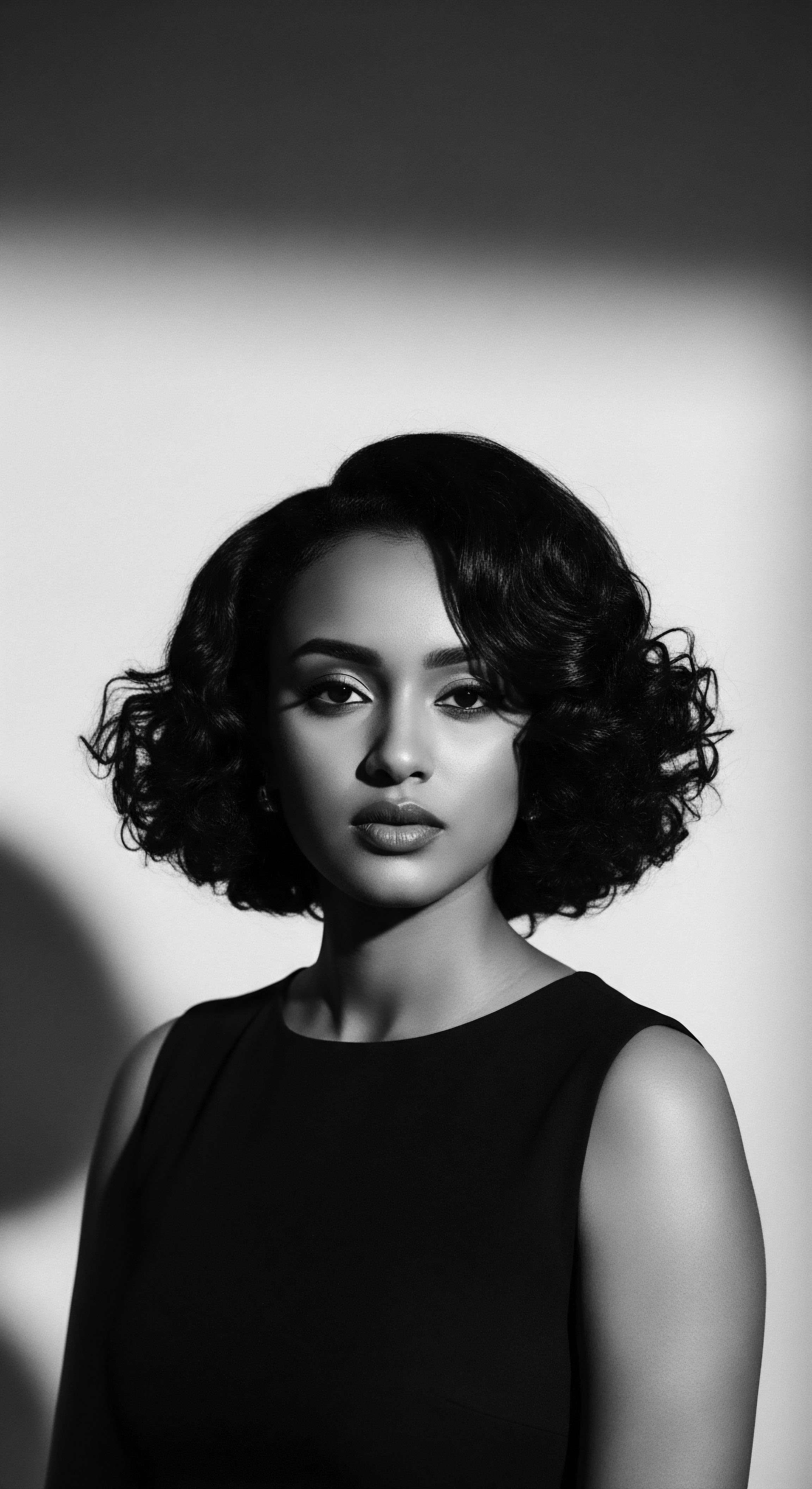
How Did Ancient Hair Tools Work With Mucilage?
The tools of ancestral hair care were often simple, yet profoundly effective, and their efficacy was amplified when paired with mucilaginous preparations. Wide-tooth combs, often crafted from wood or bone, were preferred for their gentle passage through thick, curly hair, minimizing snagging and breakage. The slip provided by a flaxseed or slippery elm gel would have further eased this process, allowing the comb to detangle with minimal friction. This careful, patient approach to detangling, often performed in sections, remains a foundational aspect of generational wisdom within Black communities.
The application of treatments was often done with the hands, the most primal and intuitive tools. The warmth of the palms would help activate the botanicals, spreading the mucilage evenly across the hair strands. These tactile rituals fostered a deeper connection between the individual and their hair, transforming routine care into a mindful, almost meditative practice.
The wisdom was in the touch, the understanding of how much product to use, and the patience required to work through the hair’s natural patterns. This sensory experience, steeped in tradition, is a core aspect of how hair care connected generations, not just through shared practices, but through the feeling of care itself.
The journey of plant-based emollients, especially those rich in mucilage, from ancient practices to modern understanding, reveals a continuous thread of wisdom. The following table highlights this evolution, connecting the historical uses of mucilage in styling to contemporary hair care applications.
| Botanical Source Slippery Elm Bark |
| Traditional Styling Application Aiding detangling, creating pliable hair for braids and twists, smoothing coarse strands. |
| Contemporary Hair Care Parallel Detangling conditioners, curl creams, leave-in moisturizers for enhanced slip. |
| Botanical Source Flaxseed |
| Traditional Styling Application Defining coils, setting natural styles, adding shine, reducing frizz after styling. |
| Contemporary Hair Care Parallel Curl defining gels, natural styling products, frizz-control serums. |
| Botanical Source Okra Pods |
| Traditional Styling Application Softening and conditioning hair for easier manipulation into protective styles, promoting manageability. |
| Contemporary Hair Care Parallel Hair masks, conditioners for softening and hydrating textured hair. |
| Botanical Source Marshmallow Root |
| Traditional Styling Application Facilitating knot removal, adding slip for finger-detangling before styling, providing gentle hold. |
| Contemporary Hair Care Parallel Pre-poo treatments, detangling sprays, styling foams for softness and definition. |
| Botanical Source These botanical gifts, recognized for their mucilage, continue to serve the needs of textured hair, bridging ancient solutions with contemporary products. |
This continuity underscores the timeless efficacy of mucilage for textured hair. The traditional knowledge, rooted in careful observation and practical application, laid the groundwork for modern formulations that seek to replicate the natural smoothing and conditioning benefits of these botanicals. The transformation of a raw plant material into a functional hair care product, whether through simple boiling or more complex extraction, represents a fascinating blend of historical ingenuity and ongoing scientific validation.

Relay
The deep knowledge of botanicals and their mucilaginous properties did not exist in isolation; it was interwoven with a holistic approach to wellbeing, a philosophy that viewed hair care as an integral aspect of self-preservation and communal health. This ancestral wisdom, particularly within Black and mixed-race communities, recognized that vibrant hair was not just about superficial appearance. It was a reflection of internal balance, respectful external care, and a continuity of cultural practice.
The relay of this wisdom, from elder to youth, from generation to generation, ensured the survival of practices that spoke to the intrinsic needs of textured hair, long before mainstream beauty industries began to acknowledge its unique requirements. Mucilage played a central role in this enduring legacy of care.
Dryness and breakage are perennial challenges for textured hair, owing to its structural complexities and natural patterns. Historically, communities combated these issues not with harsh chemicals, but with the emollients and hydrating agents found in their immediate botanical environment. Mucilage-rich plants became staples for their ability to seal moisture within the hair shaft, improving elasticity and resilience. This helped hair bend before it broke, a crucial factor in preventing hair loss and maintaining length.
The wisdom of preserving hair, especially overnight, is a cornerstone of this holistic care. Nighttime rituals, such as wrapping hair with silk scarves or satin bonnets, served to protect delicate strands from friction and retain precious moisture. These practices were not just about aesthetics; they were about safeguarding the hair’s health, an act of reverence for the ‘crown’ passed down through families.
A poignant example of this holistic, heritage-driven approach comes from the traditional hair care practices of some African Communities, where the use of plant mucilage was a strategic tool for hair health and styling. Among certain groups, particularly in regions where dry climates prevailed, the deliberate application of substances like Okra Mucilage was not merely for temporary smoothing. It was a calculated act to instill moisture and manageability, thereby reducing breakage during manipulation and safeguarding the hair from harsh environmental elements.
Okra, known for its thick, slimy mucilage, has been historically cultivated and its mucilage-rich pods utilized in various forms to condition and soften hair. This was a practical adaptation, a response to lived environmental conditions and hair’s specific needs, embodying centuries of observation and communal knowledge.
Holistic textured hair care, deeply rooted in heritage, employed mucilage-rich botanicals to address dryness and breakage, aligning with ancestral wisdom about moisture retention and protective rituals.
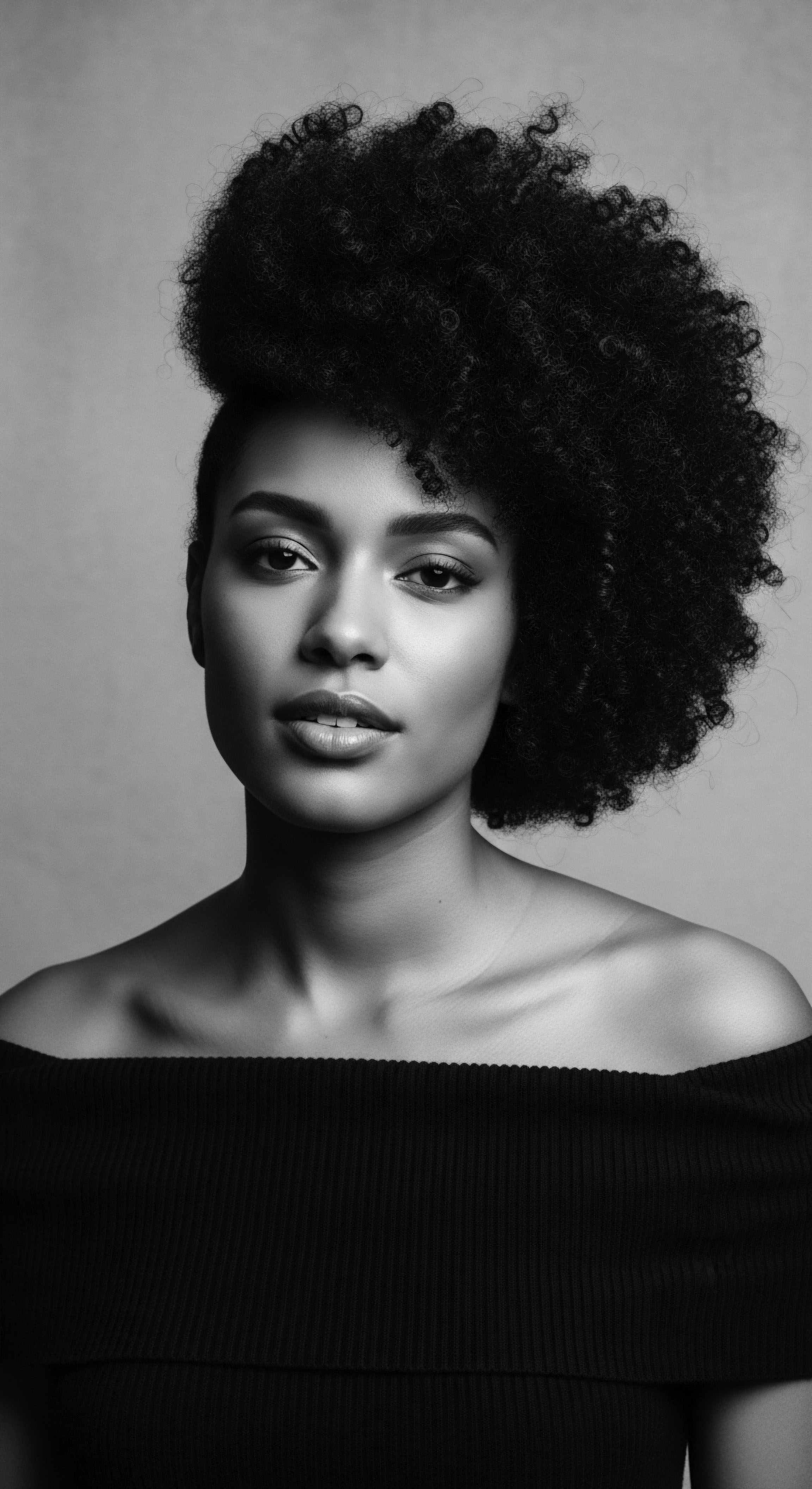
How Does Mucilage Hydrate and Smooth Textured Hair?
The scientific basis for mucilage’s effectiveness lies in its hygroscopic nature; it draws moisture from the environment and binds it to the hair. This is particularly important for textured hair, which tends to be more porous and susceptible to moisture loss. When mucilage coats the hair, it creates a flexible, breathable barrier that minimizes evaporation, thereby maintaining hydration for longer periods.
This constant infusion of moisture helps to soften the hair, making it more pliable and less prone to brittleness. The consequence of this sustained hydration is a visibly smoother appearance, as the individual cuticle scales are laid flat and the hair shaft gains a healthy suppleness.
Mucilage also possesses demulcent properties, meaning it can soothe and calm irritated tissues. This extends its benefits beyond merely smoothing the hair shaft to promoting a healthy scalp environment. A balanced, nourished scalp is a prerequisite for healthy hair growth.
Traditional practitioners understood this connection between scalp health and hair vitality, using mucilage-rich preparations to alleviate dryness, itchiness, and inflammation. The amino acids and other nutrients present in some mucilage-yielding botanicals, such as slippery elm, can further contribute to scalp circulation and the nourishment of hair follicles.
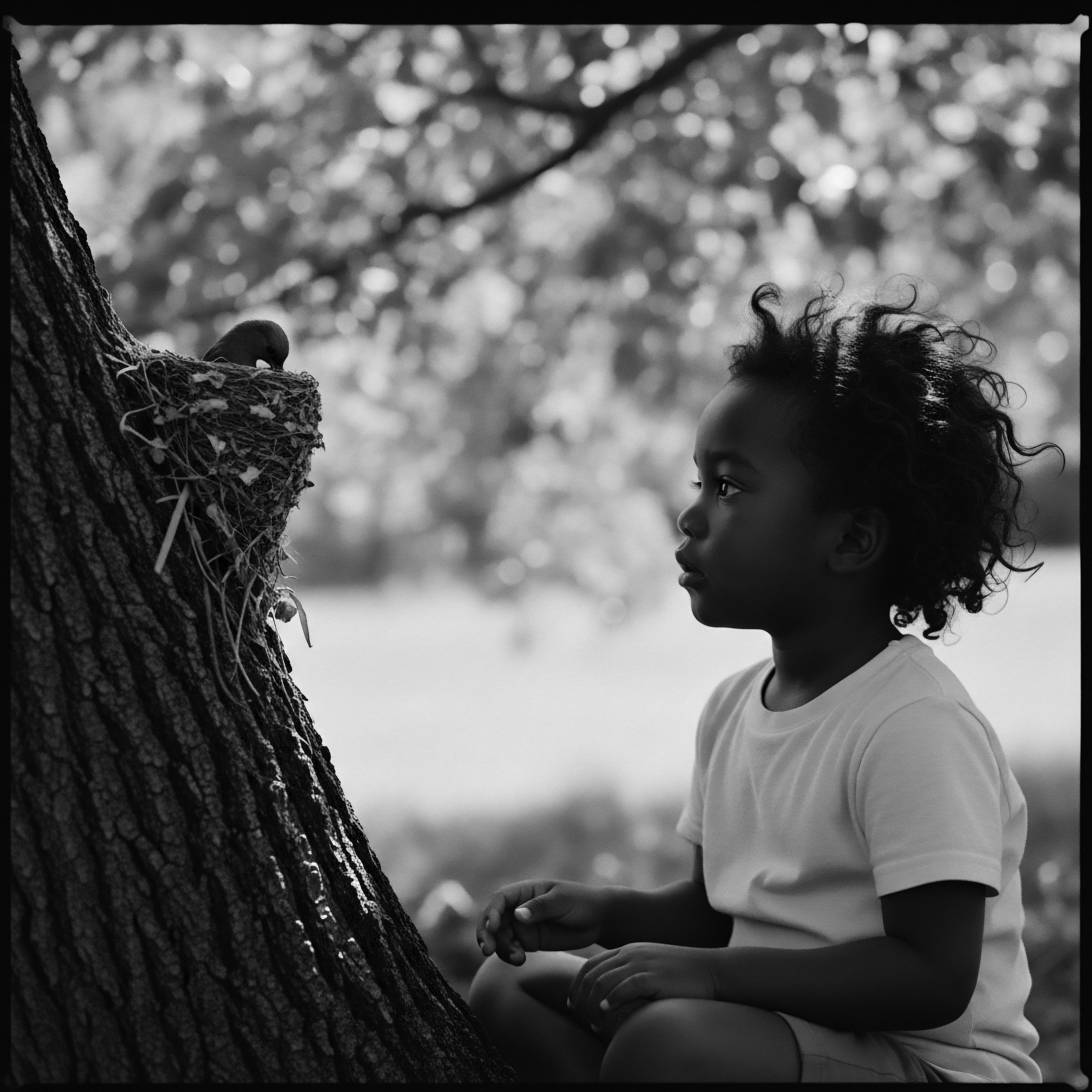
Understanding the Ancestral Pharmacy
The ancestral pharmacy for textured hair care was diverse, often drawing from locally abundant botanicals. These plants were selected not just for their immediate cosmetic effects, but for their perceived holistic benefits for the hair and scalp. The methods of preparation were often simple, involving soaking, boiling, or crushing, yet they were precise enough to extract the potent mucilaginous compounds. This hands-on engagement with the natural world fostered a deep appreciation for the living source of their remedies.
The knowledge of these botanicals was often communal, shared through oral traditions and practical demonstrations. This collective learning ensured that effective practices were preserved and adapted through generations, forming a living archive of hair care wisdom. The ingredients were considered sacred, their use imbued with respect for the plant’s life-giving properties. This stands in stark contrast to the often detached and commercialized approach to hair care prevalent in many modern societies.
- Root Mucilage ❉ The outer layers of root caps in plants often exude mucilage, a complex of polysaccharides that aid in nutrient uptake and root lubrication in soil. While not directly applied to hair in its root-exuded form, the understanding of root mucilage’s hydrating and lubricating nature hints at a deeper biological principle of ‘slip’ within nature.
- Seed Coat Mucilage ❉ Many seeds, such as flax and psyllium, produce mucilage in their outer layers. Upon hydration, this mucilage expands, forming a gel that aids in germination and water retention. This property is directly harnessed for hair care.
- Bark and Leaf Mucilage ❉ The inner bark of trees like slippery elm and the leaves of plants like marshmallow and okra yield significant amounts of mucilage when steeped in water, demonstrating the diverse botanical sources.
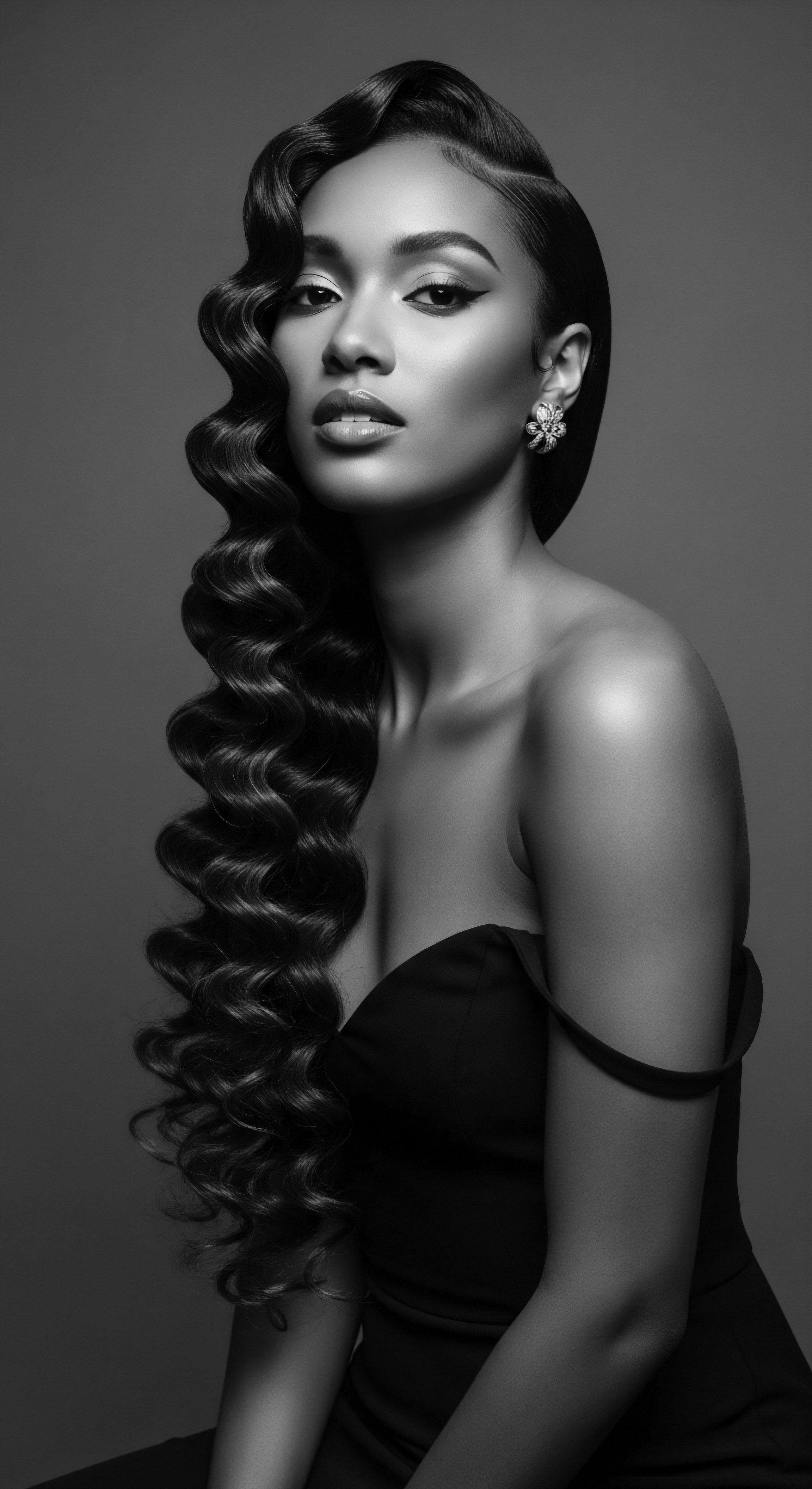
Reflection
As we trace the path of botanical mucilage from ancient groves to modern hair care, we are reminded of a profound truth ❉ the wisdom of the past holds enduring solutions for the present. The smoothing of textured hair with nature’s own mucilage is not a fleeting trend, but a rediscovery of a heritage deeply woven into the very soul of a strand. It speaks to a legacy of care, of resilience, and of an intimate understanding between people and plants that transcends time.
Our textured hair, in its myriad forms, carries the echoes of countless generations—their stories, their struggles, and their triumphs. The ancestral practice of turning to the earth for remedies, particularly mucilaginous botanicals, was a testament to ingenuity and self-sufficiency. It was a quiet act of defiance against a world that often sought to diminish Black and mixed-race beauty. Each smoothed curl, each detangled section, becomes a living archive, preserving the memory of hands that nurtured, protected, and celebrated hair as a sacred extension of self.
We stand in a continuous relay, receiving the gifts of flaxseed, slippery elm, and okra from those who came before, and recognizing their true worth in our contemporary understanding of hair health. This enduring connection to our botanical heritage offers a path forward, one that honors tradition while embracing the advancements that confirm the deep efficacy of nature’s gentle, yet powerful, touch.

References
- Banks, Ingrid. 2000. Hair Matters ❉ Beauty, Power, and Black Women’s Consciousness. New York ❉ New York University Press.
- Byrd, Ayana, and Lori L. Tharps. 2014. Hair Story ❉ Untangling the Roots of Black Hair in America. New York ❉ St. Martin’s Press.
- Dabiri, Emma. 2019. Don’t Touch My Hair. London ❉ Allen Lane.
- Herbal Roots. 2017. Slippery Elm Bark. Herbal Roots Publishing.
- Muimba-Kankolongo, Abraham. 2018. Food Security, Traditional Knowledge and Biocultural Diversity. CRC Press.
- Nyela, Océane. 2021. Braided Archives ❉ Black Hair as a Site of Diasporic Transindividuation. Thesis, York University.
- Rosado, Sybille. 2003. The Grammar of Hair ❉ Identity, Representation, and the Politics of Black Women’s Hair in the African Diaspora. PhD diss. University of California, Santa Cruz.
- Siemonsma, J. S. 2015. Vegetables. Wageningen ❉ Backhuys Publishers.
